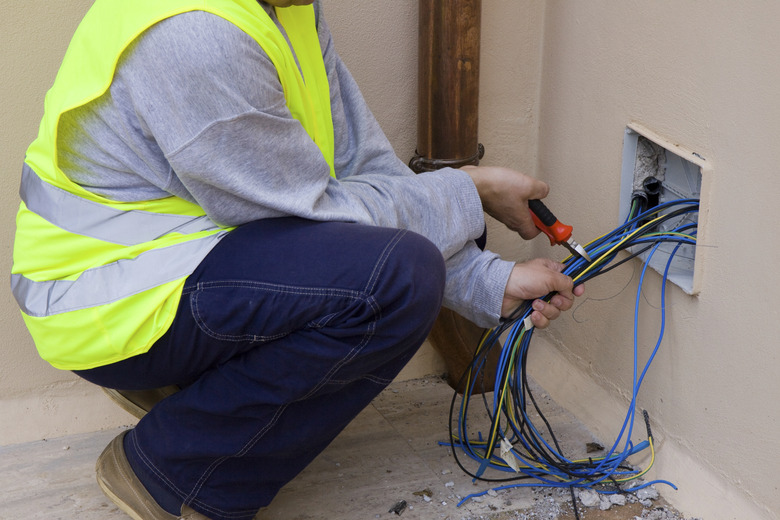Height To Install Electrical Outlets In Rough Framing
The time to install boxes for electrical fixtures in your new building is after you've completed the framing and before you cover the walls. The electrical code has few restrictions about the placement of boxes for electrical receptacles, and you can set them at virtually any height, provided they don't interfere with something else, such as baseboard heaters. If you're building a house for a disabled person, the requirements are slightly more stringent.
General Receptacle Placement
General Receptacle Placement
Although the National Electrical Code doesn't specify a minimum or maximum vertical height for receptacles, it does require them to be spaced such that no point on the wall is farther than 6 feet from a plug. This requirement usually applies to horizontal directions only, but some electricians take it to mean that no receptacle can be higher than 66 inches above the floor, unless there is another one below it. Similarly, the code requires all points on countertops to be within 24 inches of a receptacle, which means that no plug should be more than 24 inches above the counter unless there is another one below it.
People With Disabilities
People With Disabilities
If you're building a house or commercial space that will serve people with disabilities, the Americans with Disabilities Act requires that receptacles be no less than 15 inches and no more than 48 inches above the finished floor. The distance is measured from the middle of the electrical box to the floor, so if you're using a standard 4-inch box, its top can be 17 or 50 inches above the finished floor. If you haven't installed the flooring yet, be sure to add the thickness to the height measurement. These requirements apply only to receptacles intended for use by occupants of the building; the plug for the refrigerator, for example, can be lower.
Exceptions to Code
Exceptions to Code
Not everyone follows the same guidelines. For example, in Canada, the center of the receptacle box must be at least 14 inches above the floor, and in California, the bottom of the box must be at least 15 inches above the floor. California also sets a maximum height — 48 inches to the top of the box — the same as required by the ADA. When installing an electrical outlet outdoors, the box must be at least 6 1/2 inches above grade, and in garages, they should be 18 inches or more above the floor, as measured from the center of each box.
Standard Placement
Standard Placement
Although you aren't required to do so, placing your receptacles within ADA specifications ensures your structure is suitable for occupancy by a disabled person, should that ever become necessary. Keeping this in mind, many electricians maintain a minimum height of 18 inches to the top of the box and a maximum height 48 to 54 inches. Certain height guidelines are commonsense ones. No receptacle should be placed directly over a sink — it should be offset and at a convenient height for use. Similarly, there shouldn't be a receptacle above a baseboard heater; the hot air can melt the cover plate and the receptacle itself.
